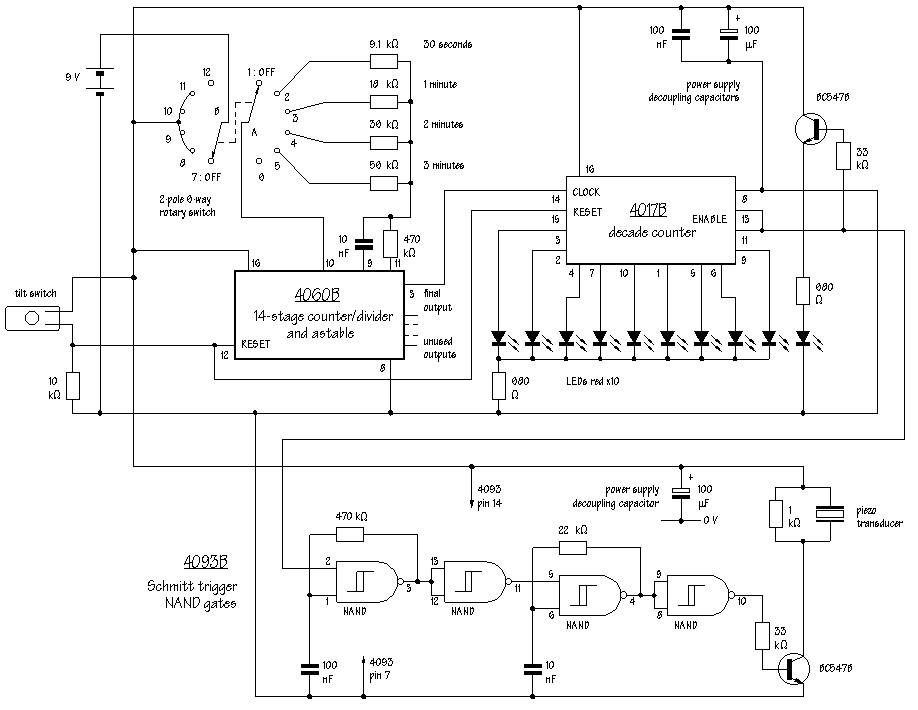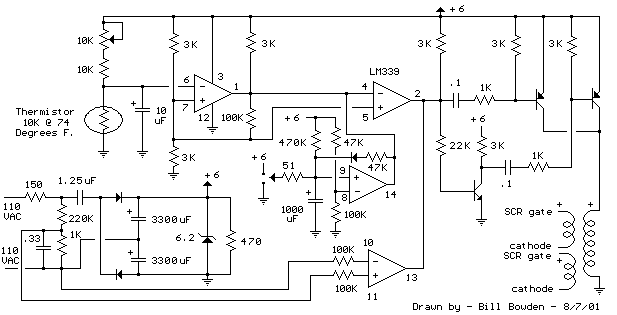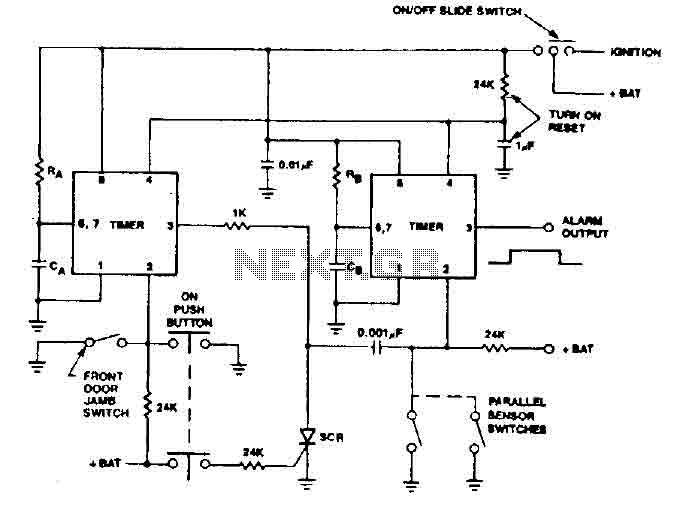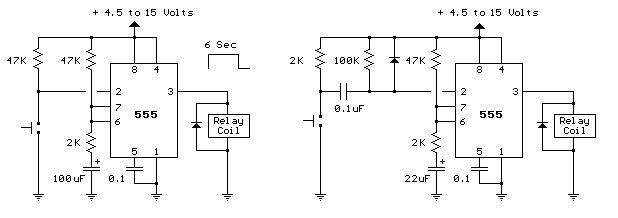
Timer
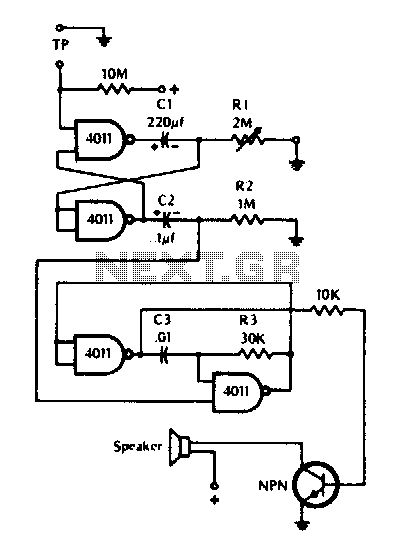
The timer can be utilized for time intervals of up to seven minutes. Activation is achieved by touching the turn-on plate, after which an alarm will sound for a brief duration upon the completion of the selected time, followed by automatic deactivation. The turn-on touch plate, denoted as TP in the schematic, consists of two metal strips positioned approximately 1/16-inch apart. Activating the timer occurs when a finger bridges the gap between these strips. To extend the time range, the values of R1 and/or C1 should be increased. The components R2 and C2 dictate the duration of the alarm sound. Adjusting either of these components will prolong the alarm period. The tone of the alarm is influenced by R3 and C3; increasing either component results in a lower tone, while decreasing them raises the tone.
The timer circuit is designed for straightforward operation, making it suitable for various applications requiring precise timing. The core of the circuit is a timing mechanism that utilizes resistors (R) and capacitors (C) to establish the desired time intervals and alarm characteristics. The touch plate (TP) serves as a user interface, providing a simple means for activation.
Upon touching the TP, a momentary connection is created, triggering the timer circuit. This initiates a countdown based on the values set by R1 and C1, which are critical for defining the maximum time period of seven minutes. The choice of resistor and capacitor values in this section directly impacts the timing accuracy and range.
For the alarm function, R2 and C2 are instrumental in determining how long the alarm will sound once the timer reaches zero. The relationship between these two components is crucial; increasing either will extend the alarm duration, ensuring that the user is adequately alerted at the end of the timing period.
Additionally, the tonal quality of the alarm is adjustable via R3 and C3. This feature allows for customization of the alarm sound, catering to user preferences or specific application requirements. The interaction between these components can be fine-tuned to achieve the desired auditory signal, with lower resistance or capacitance yielding a deeper tone, while higher values produce a sharper sound.
Overall, this timer circuit exemplifies a blend of simplicity and functionality, making it an effective solution for timing applications in various electronic projects. The design allows for easy modifications to adapt to different timing and sound requirements, enhancing its versatility in practical use.The timer can be used wherever time periods of up to seven minutes duration are needed. To turn on just touch the turn-on plate, and after the selected time has elapsed, an alarm will sound for a short period, then automatically turn off. The turn-on touch plate, labeled TP in the diagram, is made up of two metal strips about 1/16-inch apart.
Bridging the gap with your finger activates the timer. For more time range, increase Rl and/or Cl. R2 and C2 determine the period of time that the alarm will sound Increasing either will extend the time. The tone of the alarm is determined by R3 and C3. Increasing either lowers the tone, decreasing them raises the tone.
The timer circuit is designed for straightforward operation, making it suitable for various applications requiring precise timing. The core of the circuit is a timing mechanism that utilizes resistors (R) and capacitors (C) to establish the desired time intervals and alarm characteristics. The touch plate (TP) serves as a user interface, providing a simple means for activation.
Upon touching the TP, a momentary connection is created, triggering the timer circuit. This initiates a countdown based on the values set by R1 and C1, which are critical for defining the maximum time period of seven minutes. The choice of resistor and capacitor values in this section directly impacts the timing accuracy and range.
For the alarm function, R2 and C2 are instrumental in determining how long the alarm will sound once the timer reaches zero. The relationship between these two components is crucial; increasing either will extend the alarm duration, ensuring that the user is adequately alerted at the end of the timing period.
Additionally, the tonal quality of the alarm is adjustable via R3 and C3. This feature allows for customization of the alarm sound, catering to user preferences or specific application requirements. The interaction between these components can be fine-tuned to achieve the desired auditory signal, with lower resistance or capacitance yielding a deeper tone, while higher values produce a sharper sound.
Overall, this timer circuit exemplifies a blend of simplicity and functionality, making it an effective solution for timing applications in various electronic projects. The design allows for easy modifications to adapt to different timing and sound requirements, enhancing its versatility in practical use.The timer can be used wherever time periods of up to seven minutes duration are needed. To turn on just touch the turn-on plate, and after the selected time has elapsed, an alarm will sound for a short period, then automatically turn off. The turn-on touch plate, labeled TP in the diagram, is made up of two metal strips about 1/16-inch apart.
Bridging the gap with your finger activates the timer. For more time range, increase Rl and/or Cl. R2 and C2 determine the period of time that the alarm will sound Increasing either will extend the time. The tone of the alarm is determined by R3 and C3. Increasing either lowers the tone, decreasing them raises the tone.
